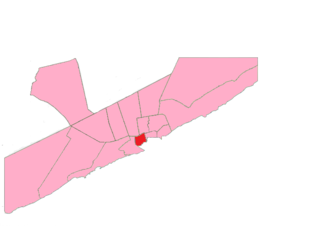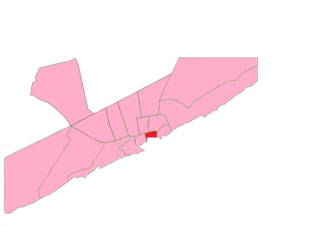Related Research Articles

Banaadir is an administrative region (gobol) in southeastern Somalia. It covers the same area as the city of Mogadishu, which serves as the capital. It is the only region in the country not belonging to any of the seven states. It is bordered to the northwest by the Shabelle river, and to the southeast by the Indian Ocean. Although by far the smallest administrative region in Somalia, it has the largest population, estimated at 1,650,227 in 2014.

The endoglossic language of Somalia has always been Somali, although throughout Somalia's history various exoglossic languages have also been used at a national level.

Mai-Mai, commonly spelled Maay Maay, is a dialect of the Somali language of the Cushitic branch of the Afro-Asiatic family. It is mainly spoken in Somalia and adjacent parts of Ethiopia and Kenya. In Somalia, it is spoken in South West state, Jubaland state, and Banadir. It is one of the dialects of the Somali language.
The Banaadiri people are a people group in Somalia. Banaadiris largely inhabit Somalia's southern coastline.
The Somali languages form a group that are part of the Afro-Asiatic language family. They are spoken as a mother tongue by ethnic Somalis in Horn of Africa and the Somali diaspora. Even with linguistic differences, Somalis collectively view themselves as speaking dialects of a common language.

Hamar Weyne District is a district in the southeastern Banaadir region of Somalia. It includes a part of central Mogadishu. Hamar Weyne is the oldest district with in Mogadishu and up until 1938 the city of Mogadishu was made up of Shingani and Hamar Weyne.Somali word "xamar" means tamarind tree.

Shangani District is a district in the southeastern Banaadir region of Somalia. It lies in central Mogadishu. Shingani along with Hamar Weyne are the oldest districts in Mogadishu. Shangani means On the sand in Swahili, as this district was originally a Benadir settlement.
Ashraf is a speech variety of uncertain classification within the East Omo-Tana sub-branch found in the Marka district of the Lower Shebelle region and Banaadir region of southern Somalia.

The Arba'a Rukun Mosque, also known as Arba Rucun, is a mosque in the Shangani medieval district of Mogadishu, Somalia.

Xamar Weyne's Friday mosque is said to be one of the oldest mosques in Mogadishu and in Africa.
Shingani's Friday mosque is said to be one of the oldest mosques in Mogadishu and in Africa. Historically, Jamacaha Shingani is the most important building in the historical quarter of Shingani.
The Awooto Eeday Mosque is a small mosque located in one of the old historical alleyways of Hamar Weyne in Mogadishu.
The Sheikh Ahmed Sharif Mosque is small mosque in the historical Shingani district in Mogadishu.
Haatim are a Somali clan from southern coastal cities of Baraawe, Marka, Kismayo and Mogadishu, they can also be found in the hinterland towns in the inter-riverine are of Somalia and further down the Swahili coast. The Haatim clan are synonymous with the town they first settled in, Baraawe and make up one of the groups part of the "todobo Tol" also known as Bravanese people.
Reer Faqay, also known as Banu Qahtan, is a Somali clan and a Benadiri sub clan. It is primarily found in the southern coastal cities of Mogadishu, Marka, Baraawe and Kismayo. They established communities in the hinterlands in towns such as Afgooye, Baidoa, Diinsoor and Bardheere.
'Shanshiyo or Shaanshi is a Banaadiri clan, mainly from the southern coastal cities of Mogadishu, Marka, Baraawe and Kismayo which established communities in the hinterlands in towns such as Baidoa and Diinsoor due to trading.
The 12 Koofi, more commonly known as Reer Marka, are a Somali confederation of clans inhabiting the city of Merca and other southern coastal towns of Somalia.
The Reer Manyo is a confederacy of clans based on the southern coast of Somalia, primarily in the cities of Mogadishu and Merca and the towns and villages between them.
Gaameedle are a Somali clan mainly from the southern coastal cities of; Marka and Mogadishu.
Sheekhaal Gendershe also known as Reer Aw Garweyne are a Benadiri clan, mainly from the southern coastal towns of Gendershe, Marka and Mogadishu. The Gendershe have also established communities in the hinterlands in towns such as Afgooye and the villages surrounding it due to trading and farming.